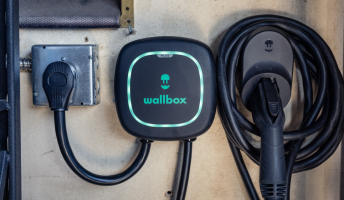Yikes
SAWHORSE
U.S. Electric Code Will Soon Ban DIY EV Charger Installs
Making it illegal for homeowners to install their own EV chargers could actually undermine safety rather than improve it.Eric Tingwall | Writer | Motor Trend Staff Photographer | Jun 20, 2025
So, with the 2026 edition of the National Electrical Code approved as proposed, it will become illegal in coming years for many U.S. homeowners to install their own EV chargers. The only thing that could have stopped this from happening was a last-chance motion to strike the clause from the code at the National Fire Protection Association’s annual technical meeting on Friday, June 20, 2025.
The change stems from a new addition to the 2026 NEC that reads, “Permanently installed electric vehicle power transfer system equipment shall be installed by qualified persons.” As proposed and ratified, the 2026 NEC defines a qualified person in vague terms likely to be interpreted by states and code enforcement departments to mean a licensed electrician.
The problem with the proposed language is that making do-it-yourself installations illegal doesn’t necessarily stop homeowners from doing their own electrical work. It does guarantee, however, that any EV chargers put in by amateurs will be installed without the appropriate permit and the accompanying safety inspection.
On Friday, NFPA members voted on a motion to erase the qualified person requirement from the 2026 NEC. That motion failed, so the proposed language will become official code. The National Electric Code eventually becomes law when it’s adopted by individual states. Legislatures can choose to modify or exclude certain sections (or even ignore the latest edition entirely), but many approve it with few or no changes.
The drive to reject the qualified installer provision had public support of the Electric Vehicle Charging Association, home-charger company Emporia, and other charging stakeholders. The companies signed a letter that states, “To ensure safety the goal should be that homeowners get a local building permit, and have their work inspected. Article 625.4 creates a new barrier to getting such a permit, and has a perverse incentive for the homeowner to lie and say they are installing a receptacle for a non-EV purpose.”
The second part of that statement alludes to a back door homeowners could use to permit their EV charger installations in the future. Because there is no qualified person requirement for residential installation of devices such as water heaters and stoves, a DIYer could install a NEMA 14-50 outlet claiming they plan to use it for a welder and then plug in an EV charger after final inspection.

The letter signed by Rivian also raises concerns that the above workaround creates a disincentive for hard-wiring EV chargers, which charging experts agree is safer than using plug-in units. Cheap 240-volt outlets are susceptible to overheating, which can start a fire.
NFPA members also decided Friday that the 2026 NEC will not incorporate a second change that could make EV charging at home and at public stations less reliable. As we wrote in January, the proposed revisions require a ground-fault circuit interrupter with a five-milliamp trip threshold on every EV charging circuit. This would be in addition to the charge circuit interrupting device already built into every EV charger. On a high-power circuit like an EV charger, the low five-milliamp threshold will lead to frequent (and unnecessary) “nuisance trips” caused by wet cables or standard charging behavior. Restoring electricity to the charger in these situation will likely require someone to reset the GFCI at the panel, which is often behind a locked door for public chargers.
As with the qualified installer requirement, the GFCI addition was being contested at the NFPA annual technical meeting with a motion to remove it. Tesla, Rivian, ChargePoint, EVgo, and the Alliance for Automotive Innovation, which represents dozens of automakers and suppliers, have all signed a letter of support for the motion, which ultimately failed, too.
Correction: We originally reported that Rivian supported eliminating the qualified installer requirement based on a draft letter of support viewed by MotorTrend. We reached out to Rivian for confirmation of its position three days prior to publishing this story, but only received a response after it went live. Rivian has not taken a public position on the qualified installer addition to the NEC.
